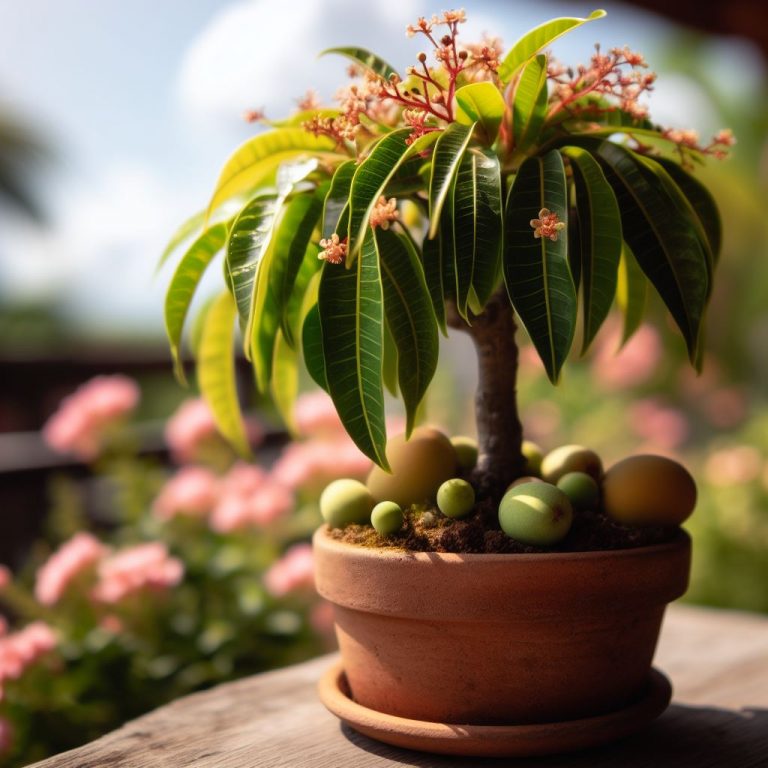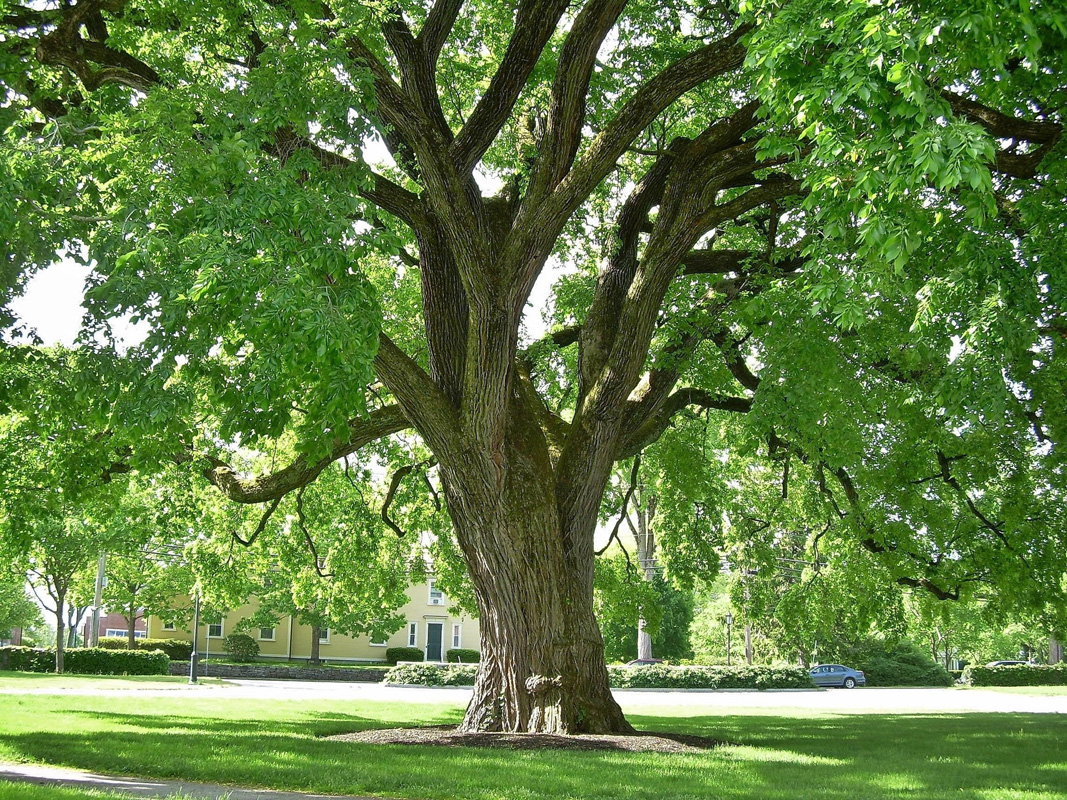Dwarf mango trees are an enchanting and delightful addition to any home garden. With their vibrant green foliage, they radiate a tropical allure that transforms any space into a serene oasis. These compact, miniature versions of their larger counterparts add aesthetic appeal and benefit from bearing delicious, homegrown fruit.
Cultivating and caring for dwarf fruit trees has gained immense popularity among home gardeners. As more and more gardening enthusiasts embrace the joy of nurturing these miniaturized wonders, they are rewarded with a unique sense of satisfaction and fulfillment. Watching these trees thrive and produce bountiful harvests is a testament to the dedication and love put into their cultivation.
This article will delve into the enchanting world of dwarf mango trees, offering insights into their history, explaining their growth process, and providing practical tips on watering, fertilizing, and harvesting these magnificent miniatures. It’s time to unravel the secrets of these compact giants and make your home garden an oasis of tropical bounty.
Dwarf Mango Tree History
The dwarf mango tree is a recent innovation in gardening, resulting from selective breeding. It is a compact version of the traditional mango tree. Unlike its larger counterpart, the dwarf mango tree is suitable for container gardening or small spaces, making it ideal for those with limited outdoor areas.
Notable varieties of dwarf mango trees have been developed over time, showcasing the continuous progress in mango cultivation. These varieties have been carefully bred to exhibit specific qualities like size, flavor, and disease resistance.
The development of dwarf mango trees is a testament to the long-standing history and evolution of mango cultivation. As growers strive to improve the characteristics of mango trees, introducing dwarf varieties has opened up new possibilities for mango enthusiasts in terms of space utilization and convenience.
Growing Dwarf Mango Tree
Before planting a dwarf mango tree, it’s crucial to select a suitable variety, and factors such as the planting process, soil requirements, and sunlight needs must be examined to ensure that the tree thrives. Here are some other essential tips to consider when growing a dwarf mango tree:
Selection of Dwarf Varieties
Below are several dwarf mango varieties available, each with its unique characteristics, offering a delightful array to choose from:
- Jie Mango: Also known as the ‘Tropical Peach,’ it thrives in hot climates and is prized for its lovely, peach-like flavor. Julie mango is ideal for container growth due to its small size.
- Malika: A hybrid from India with a sweet, highly aromatic flavor. It’s an excellent choice for cooler climates because it can withstand temperatures.
- Cshall Mango: This variety is resistant to diseases, making growing easier with less maintenance. Cogshall mangoes are perfect for small spaces as they can be maintained at just six feet.
Choosing a suitable variety involves considering the local climate, available space, and personal preferences for taste and aroma. While all dwarf mango trees can be grown in containers, some varieties naturally stay smaller and are more suitable for constricted spaces. Bear in mind that while dwarf mango trees are generally more tolerant to cold than their larger counterparts, they still prefer a warm, sunny climate. Selecting a variety that fits your taste and complements your garden’s conditions is essential to ensure a healthy and fruitful yield.
Planting Process
When planting a dwarf mango tree, select a well-draining spot with plenty of sunlight. The ideal time to plant is during the warmer months. Here are some tips to help you get started:
- Select a sunny spot: Dwarf mango trees need plenty of sun, so select a location where the tree will receive at least 6 hours of direct sunlight each day.
- Check soil drainage: The dwarf mango tree thrives in well-drained soil. To test, dig a hole about 1 foot deep, fill it with water, and see how quickly it drains. If it’s empty within an hour, it’s a good sign.
- Prepare the planting hole: Dig twice as wide and deep as the tree’s root ball. Mix the removed soil with compost or organic matter to ensure the tree gets a nutrient-rich start.
- Plant the tree in the hole, ensuring it’s centered and straight. The top of the root ball should be slightly above ground level. Fill the gap with the soil-compost mix, patting down firmly to remove any air pockets.
- Water thoroughly: After planting, water the tree thoroughly and continue to water regularly, particularly during dry periods.
Choosing the right location and properly preparing the soil can significantly influence the growth and fruit production of your dwarf mango tree. Remember, a sunny spot and well-drained soil are critical to a thriving mango tree.
Soil Requirements
Dwarf mango trees flourish in well-drained, fertile soil with a pH between 5.5 to 7.5. They prefer soil rich in organic matter but can tolerate a wide range of soil types, including sandy, loamy, and clay soils, provided they are well-drained. Good drainage is essential to prevent water-logging, which can lead to root rot.
If your soil doesn’t meet these requirements, consider amending it with organic matter like compost or well-rotted manure. This will improve the soil structure, making it more conducive for root growth and providing essential nutrients for the tree.
If your soil is heavy clay, consider adding sand to improve drainage. Conversely, add some clay or compost to sandy soil to increase its ability to hold water and nutrients. Before planting, it’s advisable to test your soil’s pH level. If the pH is too high (alkaline), you can lower it by adding sulfur or peat moss. If it’s too low (acidic), you can raise it by adding lime.
Investing time in soil preparation can ensure a healthy start for your dwarf mango tree and increase the likelihood of a bountiful harvest. Remember, the ground is the foundation of your tree’s growth. Ensuring it’s well-prepared provides the best environment for your tree to thrive.
Sunlight Needs
Like their larger counterparts, dwarf mango trees thrive in full sun, requiring at least six hours of direct sunlight daily for optimal growth. Sunlight plays a critical role in photosynthesis, which, in turn, influences the tree’s overall health and productivity. Notably, sunlight exposure is directly linked to fruit production.
The more sunlight a tree receives, the more energy it can produce through photosynthesis, leading to larger, more abundant fruit yields. Therefore, for a bountiful harvest, ensure your dwarf mango tree gets ample daily sunlight.
Watering Dwarf Tree
Proper irrigation is essential for a healthy dwarf mango tree, and following a regular watering schedule is vital to prevent water stress. These are some guidelines to help you water your dwarf mango tree correctly:
Watering Schedule
Proper watering is crucial for your dwarf mango tree’s growth. Generally, a new tree requires watering every other day for the first week and 1-2 times a week for the first few months. Once established, the tree can generally handle dry periods, but it’s essential to water it thoroughly during prolonged dry spells.
Be mindful of your local climate and seasonal changes. Your tree may require more frequent watering in hot, dry climates or during the peak summer months. Conversely, in more relaxed, wet conditions, you may need to reduce the watering frequency to prevent overwatering, which can lead to root rot. Always feel the soil a few inches down near the tree’s base; if it’s dry, it’s time to water. If it’s still moist, wait a day before watering again.
Avoiding Water Stress
Ensure your mango tree receives consistent and adequate watering to prevent water stress. Use a drip irrigation system or soaker hose to apply water slowly, allowing it to penetrate deeply and reach the roots. Mulching around the tree’s base can also help retain soil moisture and reduce evaporation, keeping the roots cool and hydrated.
Signs that your dwarf mango tree may need watering include wilting or drooping leaves, dry and brittle leaf tips, and slow growth. If the top 2-3 inches of soil is dry to the touch, it’s usually a signal that it’s time to water. However, constantly monitor the tree’s health and adjust your watering schedule to avoid under or over-watering.
Proper Irrigation Techniques
Efficient watering techniques are vital for a healthy dwarf mango tree. Drip irrigation and soaker hoses are two of the most effective methods. Drip irrigation slowly delivers water to the tree’s root zone, reducing evaporation and allowing deeper water penetration. This results in healthier, more robust root systems.
Soaker hoses, placed at the tree’s base, emit water directly into the soil, ensuring ample moisture for the roots. These methods conserve water and facilitate optimal growth and productivity of your dwarf mango tree.
Fertilizing & Harvesting Dwarf Mango Tree
Fertilizer application and pruning are essential in keeping a healthy and productive dwarf mango tree. There are many different types of fertilizers, including organic and synthetic options. Here are some tips on fertilizing and harvesting your dwarf mango tree:
Fertilization Schedule
It’s advisable to fertilize your dwarf mango tree three to four times a year. For organic options, consider compost or well-decomposed manure, which releases nutrients slowly and improves the soil structure. If opting for synthetic fertilizers, select a balanced product (like a 10-10-10 NPK ratio), ensuring your tree receives an equal amount of Nitrogen (N), Phosphorus (P), and Potassium (K).
Always follow the manufacturer’s instructions on the packaging to avoid over-fertilizing, which can damage your tree. Remember, proper fertilization enhances the tree’s health and boosts fruit production.
Pruning for Productivity
Despite the dwarf mango tree’s compact size, proper pruning is crucial for maintaining tree health and maximizing fruit production. Pruning encourages new growth, promotes better air circulation, and directs the tree’s energy towards fruit production.
Pruning should be done after the tree’s fruiting season to avoid damaging new flowers or fruit. Start by removing dead or diseased branches to prevent the spread of disease and pests. Then, cut off branches that cross or rub against each other, as these can create wounds and entry points for infection. Finally, thin out dense foliage to improve sunlight penetration and air circulation, both essential for fruit production.
Shape your dwarf mango tree by maintaining a balanced, open canopy that allows sunlight to reach all parts of the tree. This can be achieved by selectively pruning branches to keep the tree’s shape and height.
Harvesting Techniques
Harvesting your dwarf mango tree at the right time ensures fruit quality. Mangoes typically take between 100 to 150 days after flowering to reach maturity.
The time to harvest mangoes largely depends on the variety and local climate, but there are some general indications that the fruit is ready for picking. The skin changes from a dark to lighter green, and some varieties develop a blush. The fruit will also start to give off a fruity aroma near the stem. However, these are just guidelines, and tasting is the best way to determine if a mango is ready for harvest. Pick one fruit and taste it to be sure.
Mangoes don’t need to be fully ripened on the tree; they can be picked when mature yet still firm and then allowed to ripen off the tree. When squeezed, a ripe mango will be slightly indented and yield slightly to gentle pressure. Fruit quality can be assessed by looking at the skin, which should be smooth and free of blemishes or dark spots. The fruit should also be symmetrical without any unusual lumps.
Remember, the quality of the fruit not only depends on the maturity and how you handle and store them after harvest. Handle the fruit gently to prevent bruising, and keep it at room temperature until they’re fully ripened. If you want to speed up the ripening process, place the mango in a paper bag with a banana. Once ripe, mangoes should be eaten within a few days or refrigerated to extend their shelf life.
With these tips in mind, you’ll be able to enjoy the delicious and tropical flavor of homegrown mangoes from your dwarf mango tree.
Conclusion
Growing and caring for a dwarf mango tree is a rewarding venture that combines the joys of gardening with the taste of delicious, homegrown fruit. From selecting the suitable variety suited to your climate and space to understanding the soil, sunlight, watering, and fertilization needs, each step in the process contributes to the growth and productivity of your tree. Consider the addition of a dwarf mango tree in your garden, as the experience of watching your tree flourish and the pleasure of enjoying your very own fresh mangoes truly is incomparable.






